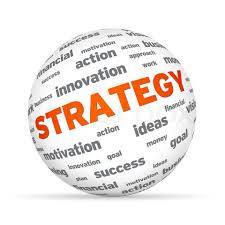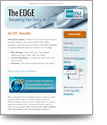The Three Phases of Web Strategy
Large or small, when it comes to web strategy, companies fit into one of three categories:
- Don’t have one - need a defined process
- Could be better - opportunity for improvement
- Solid - looking for the next big thing
Regardless of which category you are in today, the need to dedicate the resources to improve further, has never been more important. Why?
B2B Purchasing Starts With Search
Over 70% of enterprise buyers start their purchasing process through research conducted online. And, according to a recent report from Fleishman-Hillard, 89 percent of consumers turn to Google, Bing or another search engine to find information on products, services or businesses prior to making purchases.
And that search activity is skewed towards millennials. Although all age groups use search when investigating a product purchase, millennials now account for nearly half of all B2B web searches. The millennial generation, born after 1980, has never known a world without the modern day internet. They are digital natives. They look and expect to find viable information, online.
In addition, while the executive level still signs off on purchases more than ⅔ of the time, so do almost 24% of non execs. And another 81% have a say in the decision. A high number of influencers are millennials.
Mobile internet usage now exceeds desktop. And starting April 21, mobile will become part of Google’s search algorithm. So, regardless of whether you need a defined web strategy or have moved to the advanced phase, your optimization plan must evolve.
On average, B2B researchers conduct 12 searches prior to engaging on a specific companies site. If your web strategy doesn’t include optimizing for search, you are missing out on opportunities.
Buyers Judge You By Your Website
Many organizations have developed and grown based on great customer relationships. But will that strategy, without an effective website, sustain you in the future? What if a customer refers an associate to your company and the first step is to check out your website. What would they think? 46% of people look at the website as the most important criterion in determining company credibility.
They look at...
Design
If you are in the market for a new home, you likely prefer a modern kitchen, one with stainless appliances, granite countertops and hardwood floors. If you visit a home with green and gold appliances, butcher block countertops and linoleum floors, you know it’s a kitchen out of the 70s and needs a complete gut job. The same is true with your website. Outdated fonts, flash content and a site that doesn’t open uniformly on unique devices, screams outdated. Even recent design changes have a short shelf life. An outdated site doesn’t encourage your audience to learn more about you.
Organization
The most important factor in website design is making it easy for users to find what they need. That starts with navigation. Like a restaurant with dozens of food choices, a website with too many menu options decreases the ability for a user to find what they need. Words and phrases used in the menu need to be consistent with how the audience thinks of your products and services. Cute or confusing terminology cause users to drop off the site. As product and service terminology evolves it’s critical to keep your keywords on target.
Content
Ultimately, users visit a website to obtain useful information. A site containing generic information or content with little substance will turn away the audience. A content rich experience that answers questions, the questions buyers have as they make their journey through the purchasing process, will encourage the reader to return.
As technology evolves so does the ability to effectively present, organize and deliver information online. Whether it’s a new design technique or personalized content, consistently elevating your website positively impacts your audience.
The Consumer Determines When and How to Interact with a Seller
In today’s online world, 57% of a purchase decision is made before a buyer even contacts a seller. Early in the purchasing process buyers choose websites, videos, blogs and social media as the preferred method of interaction to assist them in their decision making.
Buyers look for information that coincides with where they are in the purchasing process. Educational information, solution guides, vendor comparisons and implementation plans were provided in the past by an account team. Today, the prospect looks for that content online.
Even buyers who know you, find out more about you online. How often do you present a new capability to a buyer but for a variety of reasons it doesn’t resonate at that moment? Do they remember you when they do have a need? Buyers need information, when they need the information. Today, they find it online.
By 2020 it’s estimated that 85% of a purchase will take place online. Advancing online is crucial to your future.
Which phase of web strategy are you in and how will it evolve to meet the needs of customers today and in the future? Leave me a comment to tell me where you are headed.





 Insight Delivered Directly to You Interesting topics, great offers and free marketing tools.
Insight Delivered Directly to You Interesting topics, great offers and free marketing tools.

